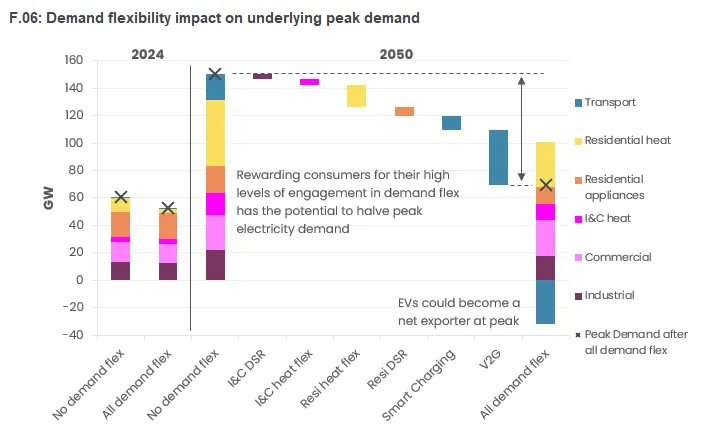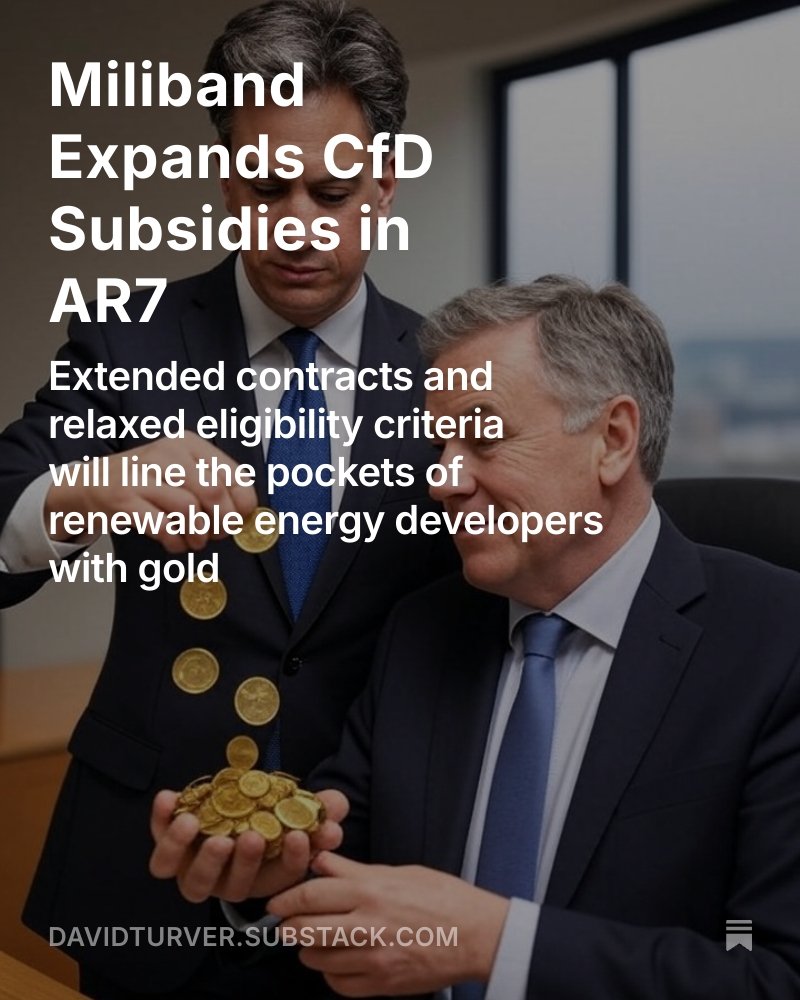Miliband is set to wreck the economy with the renewables prices he is offering in AR7. In 2025 prices, offshore wind is going to be offered £117/MWh, index-linked for 20 years which compares to today's price, set by gas of £73/MWh. A thread (1/n) 

Real 2025 offer prices for fixed and floating offshore wind have risen 10-11% and onshore wind 3% compared to last year's offer prices. Solar prices have dipped, but these changes mask the impact of contract extensions (2/n) 

In their impact assessment for extending the contract life to 20yrs from 15yrs, the Government estimated strike prices would fall 11-13%. On a like-for-like basis fixed bottom offshore wind would be costing £131/MWh (3/n)
These staggering prices do not include the extra costs of grid balancing & backup that currently cost an extra £32/MWh, nor the costs of the grid expansion that Ofgem says will cost £80bn and add £74 to our electricity bills by 2030 (4/n)
It's not even certain that projects will get built at these prices, because there's a history of contract cancellations and rebids at higher prices (5/n) 

But these prices make a mockery of the CCC's estimates for the cost of offshore wind. The CCC estimated £38/MWh for new offshore wind delivered in 2030, but the AR7 offer price is 3X more. Floating offshore wind prices even higher (6/n)
It's shocking that AR7 strike prices, expressed in 2025 terms are higher than the current electricity price of £73/MWh set by gas with a carbon tax. And that is before adding on the extra costs of backup, grid balancing and extension (7/n)
Electricity prices are going to soar, sending a job destroying tsunami through the economy. Miliband and his cheerleaders in DESNZ, NESO, CCC & Ofgem must be stopped (8/n)
If you enjoyed this thread, please like and share. You can sign up for free to read the full article on the link below (9/9)
open.substack.com/pub/davidturve…
open.substack.com/pub/davidturve…

Hi @threadreaderapp unroll please.
• • •
Missing some Tweet in this thread? You can try to
force a refresh














